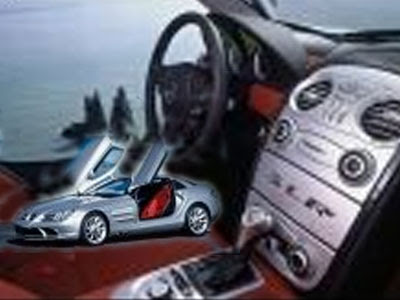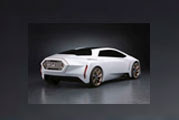
SLR McLaren Mercedes-Benz Sports Car
This sports car combines the old yet astounding SLR race cars of the 50s and the latest and meanest technology of high-performance supercars. With the power of race cars and the sleek, curves and designs of a luxury car, the combination from the two car manufacturers is hard to beat.A blast from the past and a taste of the future, this might just be a good description of the latest sports car that came out from a collaboration of Mercedes-Benz and McLaren, two big giants in the car manufacturing industry. We're talking about the 2004 Mercedes-Benz SLR McLaren.
This supercar is definitely fast. SLR McLaren sports a 626-horsepower supercharged 5.5-liter V8. Also, it has a full carbon-fiber monocoque, features crash structures and body panels. And with the supercharge V8 engine, you can see the 2004 Mercedes-Benz SLR McLaren go from naught to 60 miles per hour in less than 3.6 seconds. Top speed has been measured to exceed 200 mph, a feat that can only be achieved by very few even among the high performance sports cars. It was the high-performance division of Mercedes-Benz which created the V8s. The AMG were the ones who hand-build the supercharged V8 engines with top notched precision and quality. It is not at a big surprise to see the supercharged 5.5 (5439 cc) liter dry sumped 90 degree V8 engine to produce around 466.8 kW at 6500 rpm (626 hp) and 780 N·m (575 ft·lbf) torque at 3250 - 5000 rpm. The numbers maybe daunting but the sound of the engine will appease the minds of those who long for the perfect high performance cars.

SLR McLaren Mercedes-Benz Sports Car
Mounting that V8 engine into the body of SLR exotic car is also not as traditional as one would like to expect. The engine in SLR sports car is placed in a front mid-engine position just behind the front wheels. Instead of using the traditional oil-pan, dry-sump lubricants are used. With this innovation, it is highly possible to mount the engine to a level that used to be unachievable. Because of the low position of the engine in the supercar's body, the results are more than one hoped. The new Mercedez-Benz SLR McLaren race car has better aerodynamics and better handling due to the lower center of gravity.
Not only does the mean features of the sports car that attracts attention but how the two car companies were able to fuse their own traditions and expertise into a single exotic car. For one, McLaren's expertise in Formula 1 has been imbibed wholly by the SLR's design. The composition of carbon fiber material that was used in the body of the new SLR sports car is so Formula 1. Because of this body, the Mercedes-Benz SLR McLaren has become more rigid and surprisingly strong.
The SLR also has a five speed automatic transmission. There are modes, the Sport, Comfort and Manual which basically covers every known driving style. Sport is for everyday use, Comfort for bumpy or slippery roads, and Manual gives you control over the gears either through the touchpad or the levers on the steering wheel. When you use Manual, you open up three more modes, namely Sport, Supersport and Race. Speed increased significantly as you go up shifts.
With all these features it is not surprising that the Mercedes-Benz SLR McLaren is classified as a sports car and a supercar. Remember to get this right, though, the "SLR" does not stand for "Sportlich, Leicht, Rennsport" which is German for "Sport; Light; Racing" as most people think. Its real meaning is "super-leicht, Rennsport" which means "super-light, racing." The sports car is being sold with a base price of €443,066 £300,000 or $450,000.











